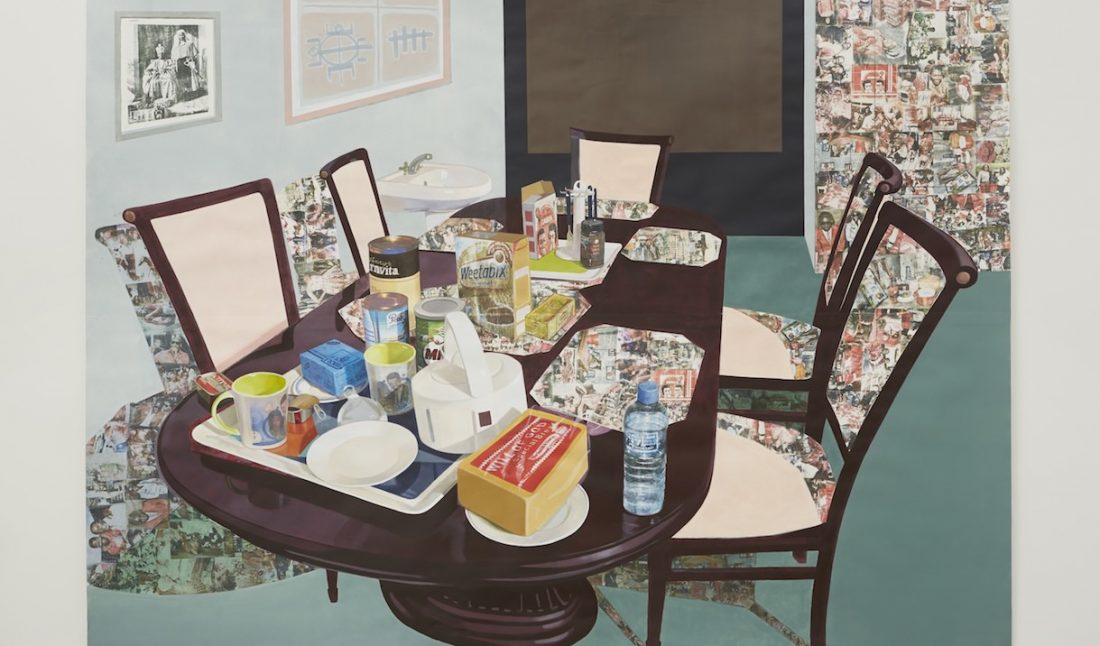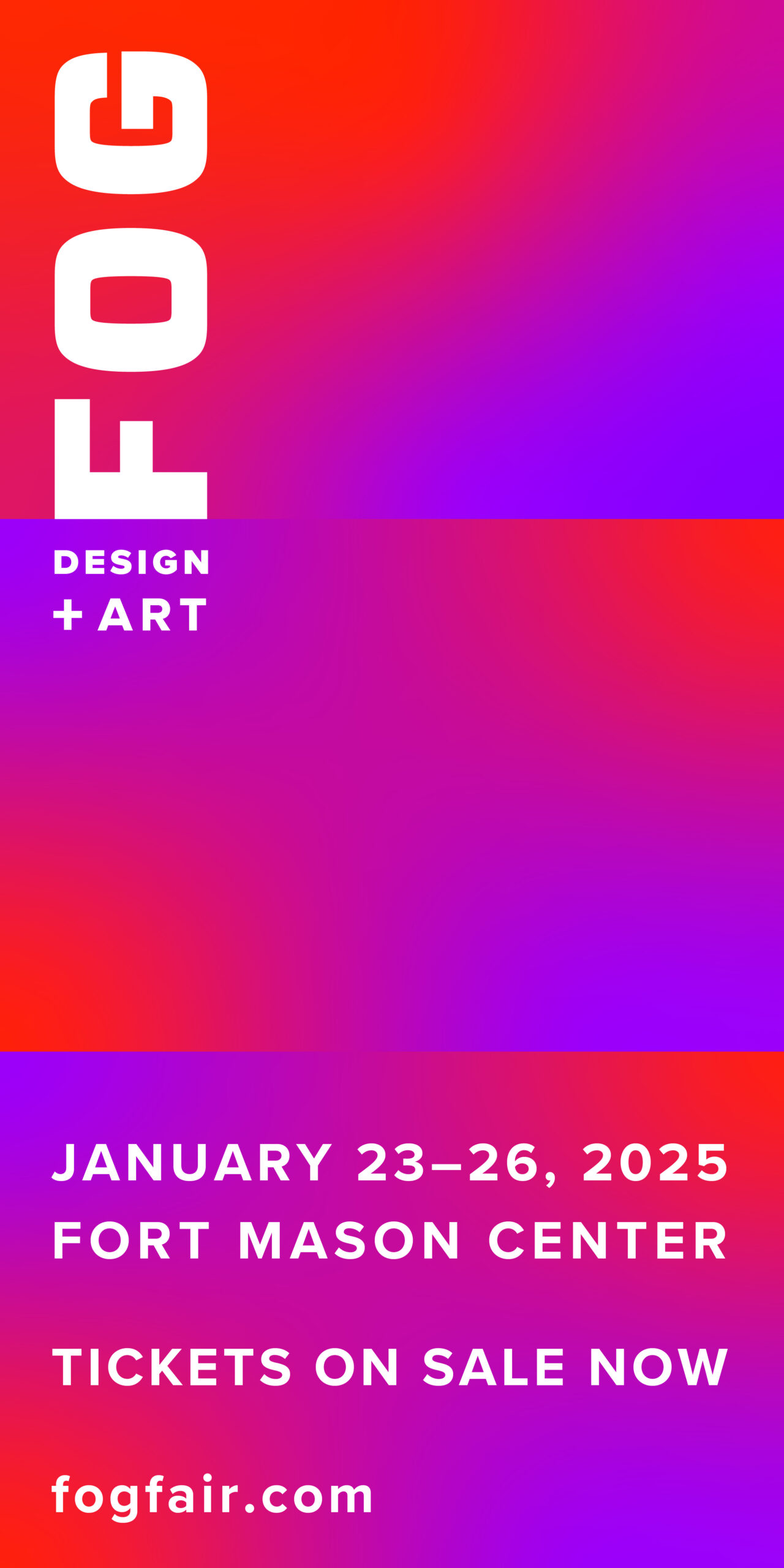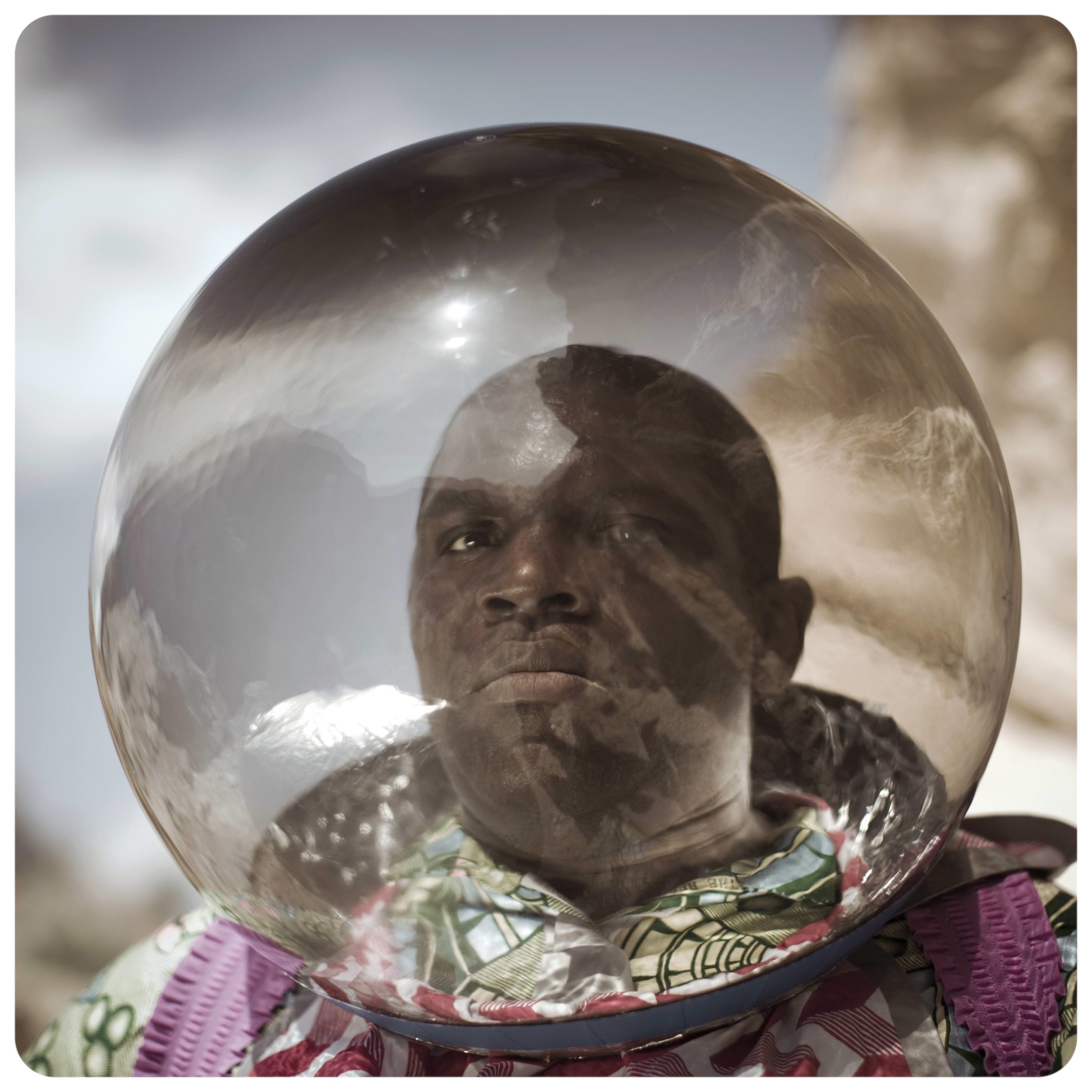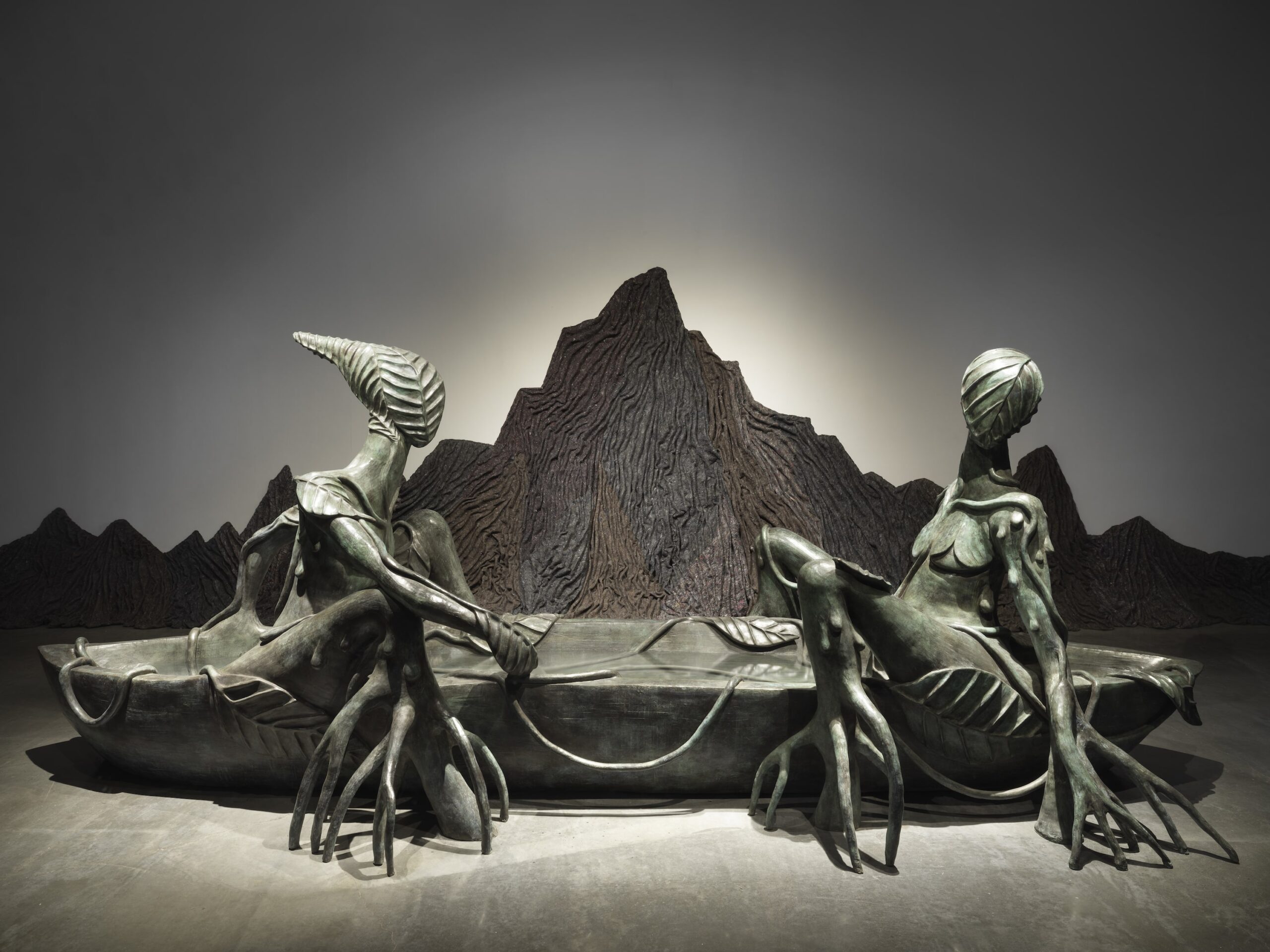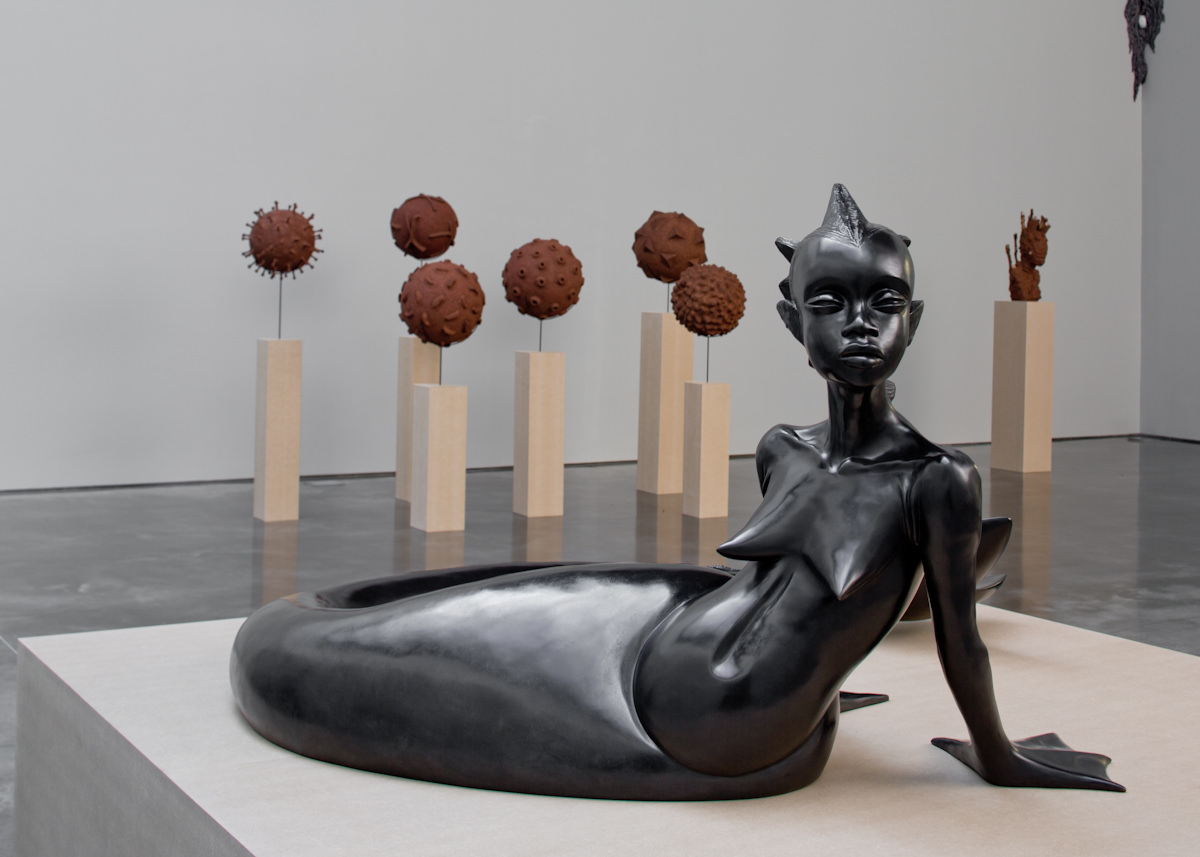The Norton Museum of Art in West Palm Beach, Florida is currently showing the first museum survey of Nigerian-born, Los Angeles-based artist Njideka Akunyili Crosby. Running through April 24, “Njideka Akunyili Crosby: I Refuse to be Invisible” is part of Norton’s annual Recognition of Art by Women series (RAW). Norton Museum of Art’s Director of Curatorial Affairs and Curator of Contemporary Art Cheryl Bruvtain spoke to Whitewall about Crosby’s work and background.
WHITEWALL: Can you tell us about choosing Njideka Akunyili Crosby for Norton’s annual Recognition of Art by Women series?
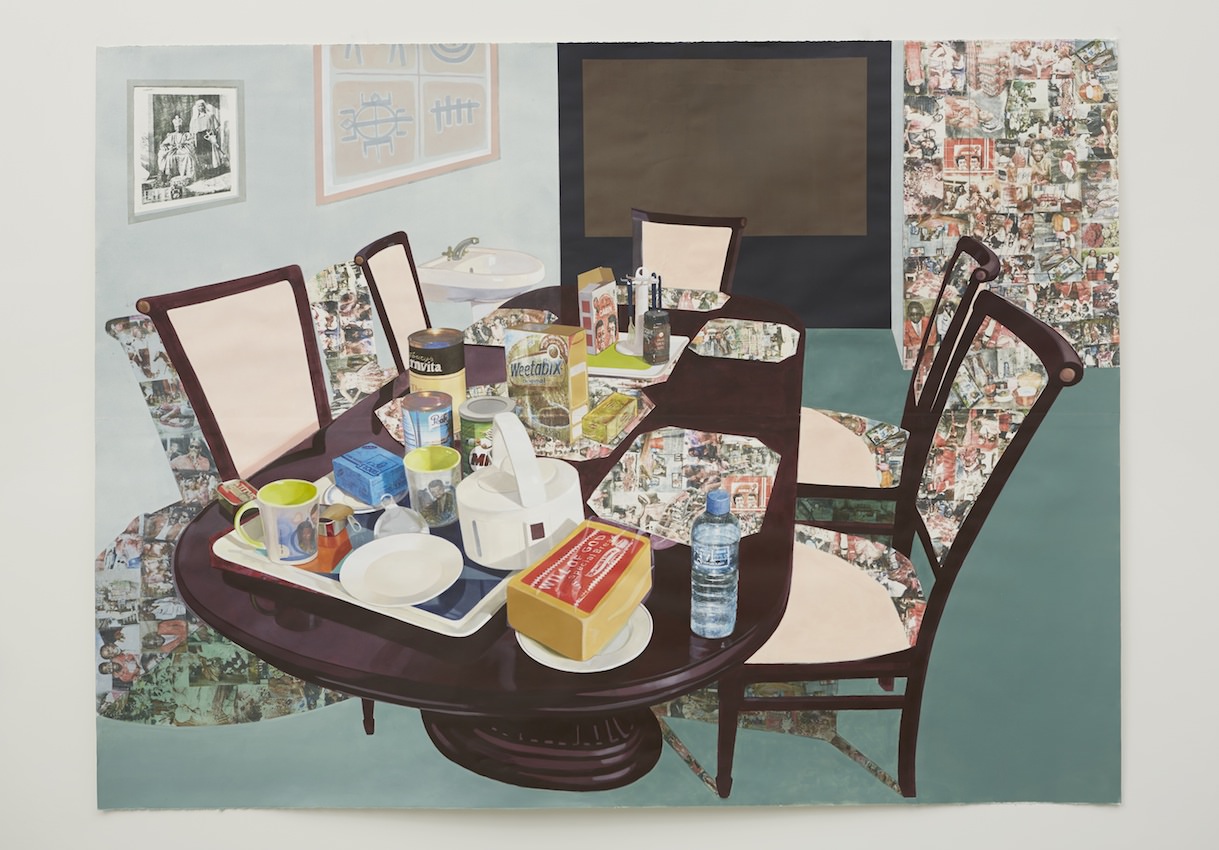 I Still Face You
I Still Face You2015
CHERYL BRUVTAIN: My choice of Njideka Akunyili Crosby was a response to her painting. It has also been critical to look at contemporary work that expands the definition of painting and sculpture, which is a requirement of the funders who are primarily interested in these traditional media. I think the scale, complexity of the surface and intimacy of the characters immediately draws in the viewer when experiencing Njideka’s paintings. It is ultimately distinct while examining the classical, figurative tradition and responding to the 21st-century in an intelligent and personal manner.
WW: Crosby left a medical career for an artistic path, do you know what provoked that decision? Is that aspect of her background visible in her work?
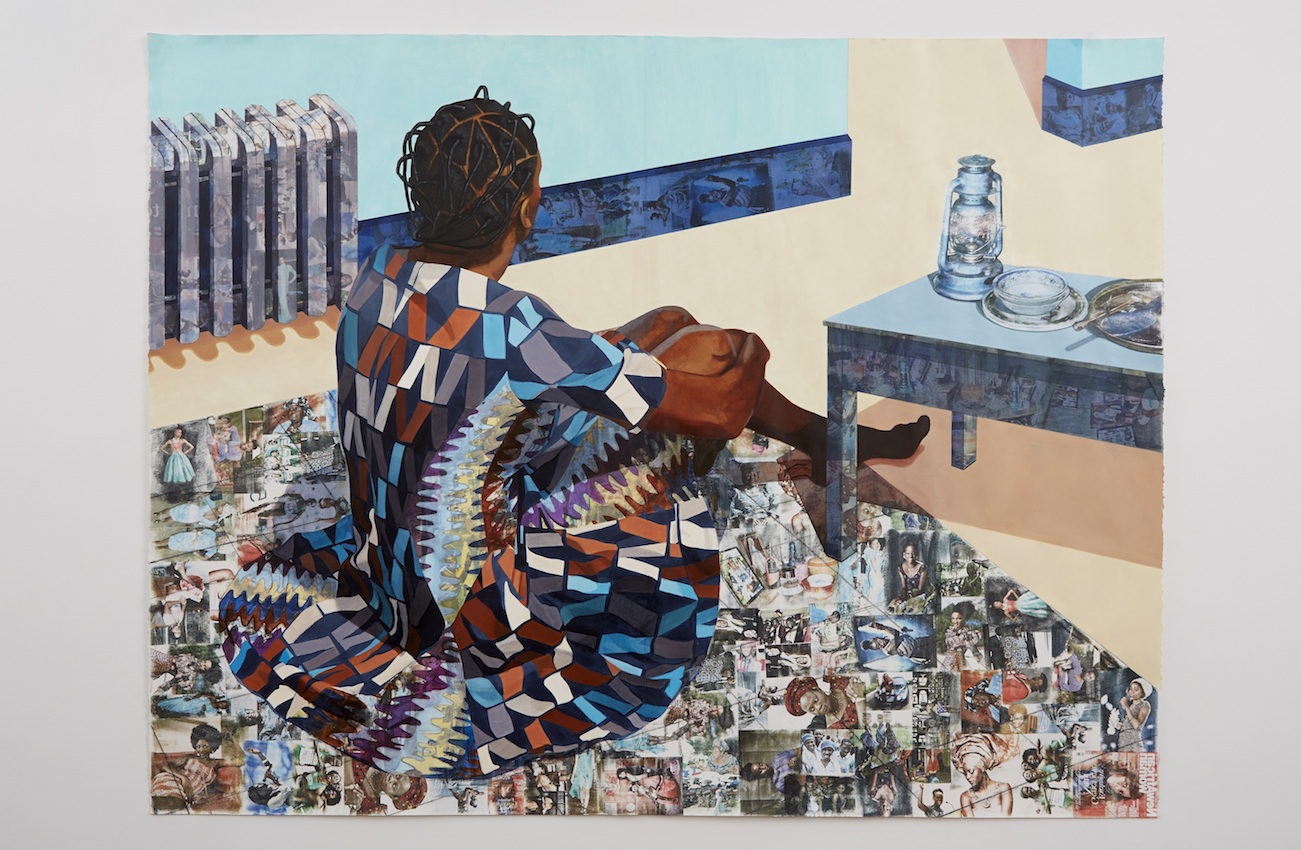 Acrylic, colored pencils, charcoal, oil, and transfers on paper
Acrylic, colored pencils, charcoal, oil, and transfers on paperCB: Both of her parents were in the field of medicine. However, despite thinking that art was something she discovered in college, she recently related that her siblings reminded her that she was always drawing when younger.
I can’t say that any aspect of medicine or biology is visible in her work. But, she is very organized and sets ambitious objectives for each composition necessitating great planning and patience to complete them. For example, each image in the photo transfers are done individually, rubbing from the source and fitting it into the overall scheme whether for skin, clothing, architecture, shadow, etc. Her painting style is also clean, precise, playing with depth, background, foreshortening, perspective, light and shadow.
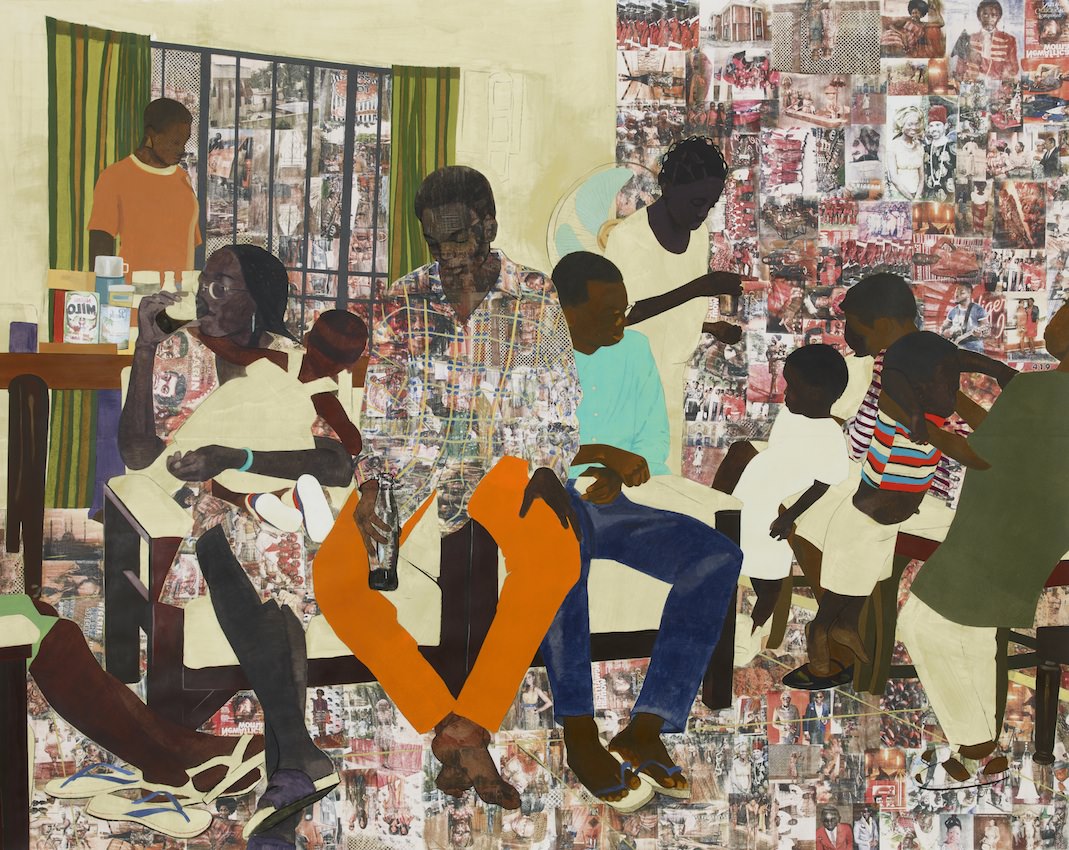 83 1⁄4 x 104 3⁄4 in.
83 1⁄4 x 104 3⁄4 in.WW: Could you describe Crosby’s evolution as an artist and her use of material?
CB: The earliest pieces in the exhibition, while still complicated and large in scale, have more planes of color. As she progresses, you find greater, more complex depth of space and more patterning.
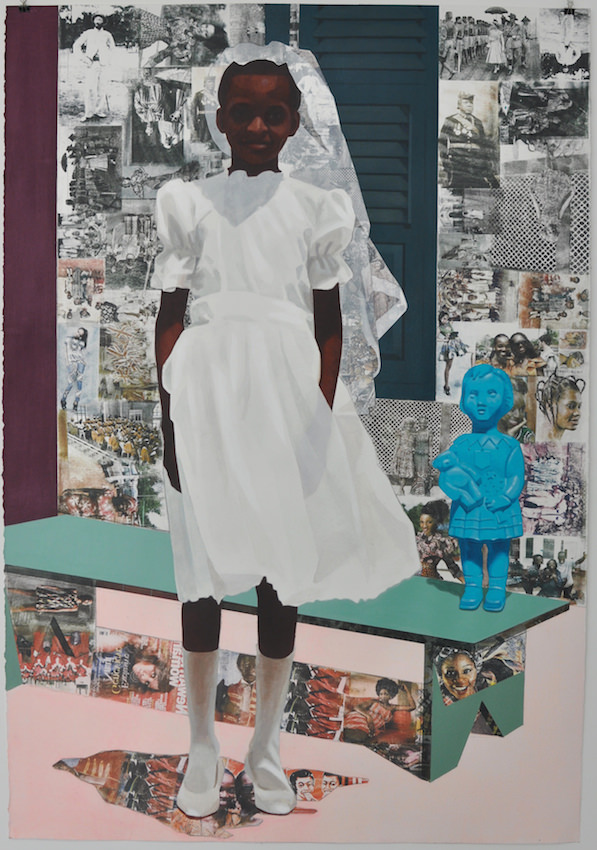 Los Angeles County Museum of Art, Purchased with funds provided by AHAN: Studio Forum, 2015 Art Here and Now purchase
Los Angeles County Museum of Art, Purchased with funds provided by AHAN: Studio Forum, 2015 Art Here and Now purchaseThe use of photo transfers certainly reference the work of Romare Bearden and Rauschenberg. For Njideka, the liberation to use cut images from other sources also came from seeing the work of Wangechi Mutu. The use of patterning also stems from Edouard Vuillard’s use in his intimate paintings of domestic interiors.
WW: Would you qualify Crosby’s work as subversive?
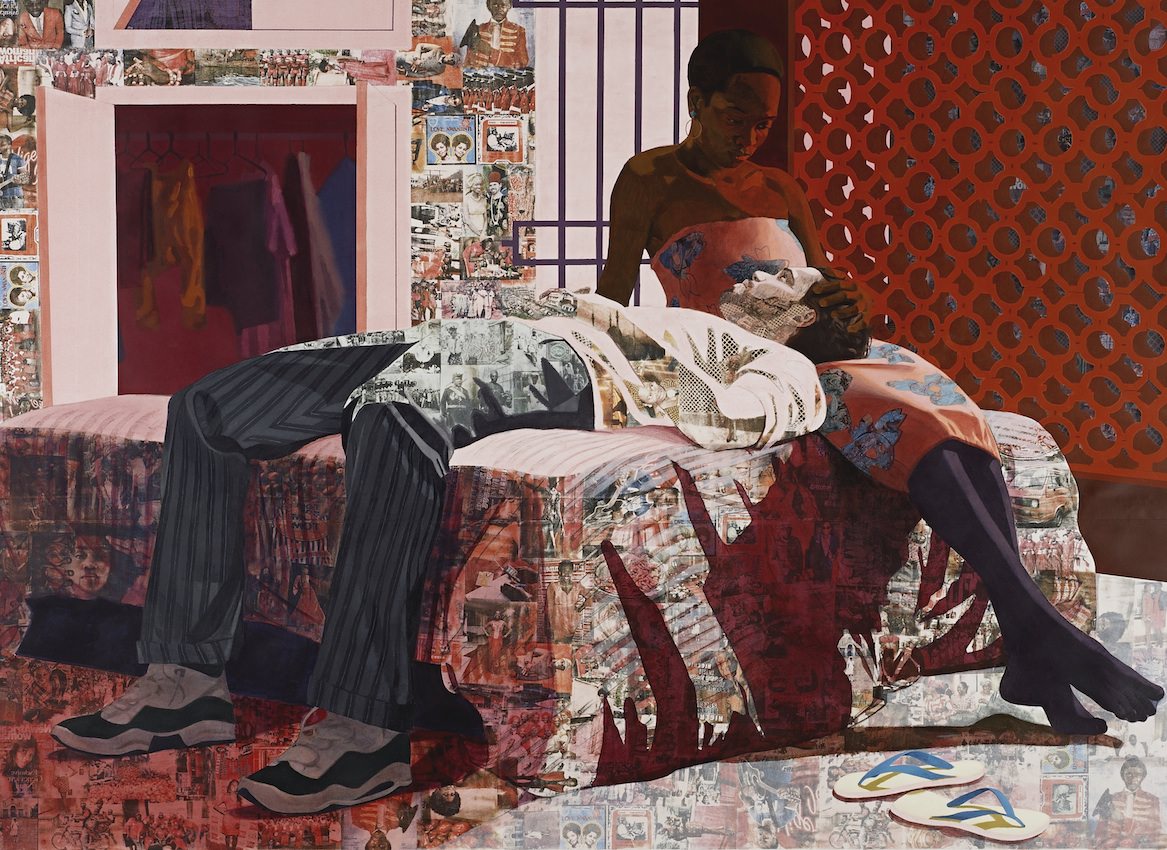 Courtesy of the artist and Victoria Miro, London
Courtesy of the artist and Victoria Miro, London
CB: Without an agenda that is political, I do think Njideka’s work has subversive elements. The figurative compositions do appear to be taken from a believable family setting, revealing a loving relationship and ordinary scenes. Yet, as you spend time and look closely you see the introduction of images of Nigerian pop stars, authors, historic and contemporary government officials, her own family and others. The choice of image and its placement is calculated, but the impact is one of curiosity unless you are familiar with Nigerian history. They sustain your interest and may push you to think of what you do, of what you don’t know, and why it is in this scene.
In her own words, Njideka answered,“I don’t always have to do something that is clearly about politics, or about religion in Nigeria, because you can’t run away from them. They will always seep in somehow, because they’re such a big part of life. In Nigeria, we had military dictatorships for most of my life, up until Sani Abacha [military president of Nigeria from 1993 to 1998] died in 1998. It was the thing everybody talked about, it was on TV all the time, every newspaper headline, it slowly filtered in.
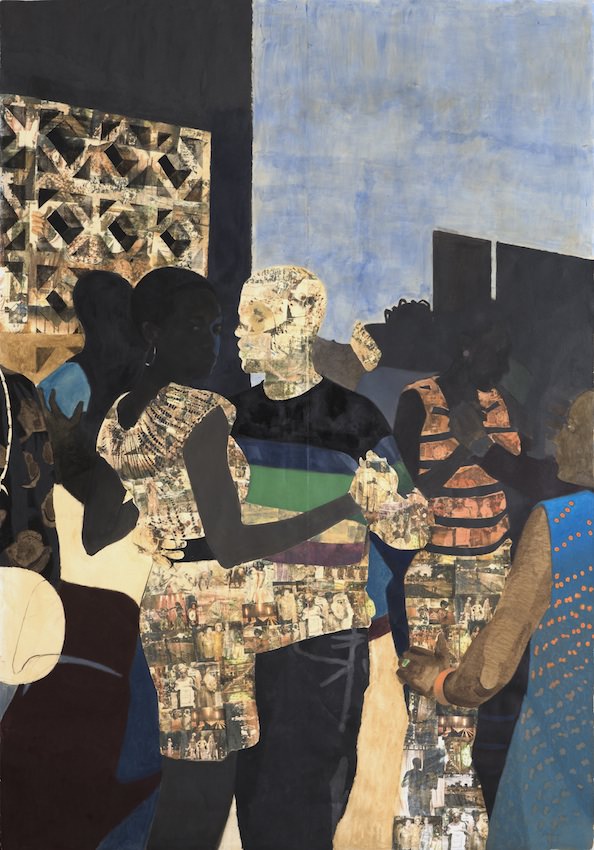 Njideka Akunyili Crosby
Njideka Akunyili Crosby(Nigerian, born 1983)
I think that ‘coup’ is a word I have in my head about my art. It’s subtle and slips in before you even know, so it turns out the image is changing your perception of a place before you even know what is happening. But political can refer to things beyond the government. I’m thinking of images I didn’t see, but wanted to see more —for example a woman of color and a white man in a very loving intimate relationship, being depicted in a very ordinary way; this is a power structure that is different from what I’ve seen before.”
“Njideka Akunyili Crosby: I Refuse to be Invisible” runs through April 24 at the The Norton Museum of Art.






